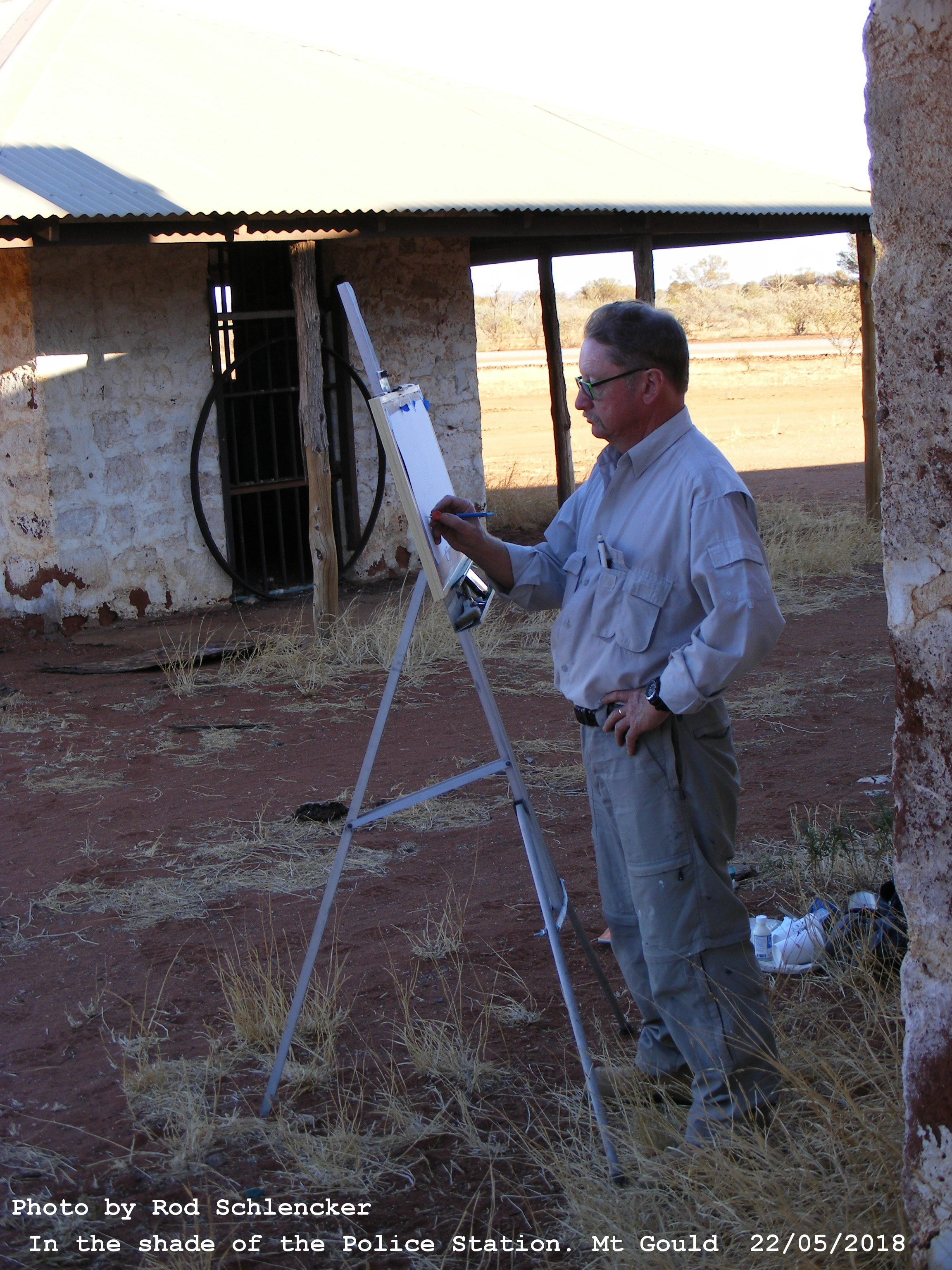BILL GANNON
Creative Fellow Bill Gannon visited sites along the historical trek between May and June 2018. Head over to the Google Map to see which of John Forrest’s 1874 camps Bill used as inspiration.

Bill is based in coastal Central Queensland. His research and fieldwork has taken him around Australia, including places rarely traversed. Bill has had exhibitions in most Australian capitals and works on Ludwig Leichhardt were exhibited in Germany.
Bill worked as a freelance animator, cartoonist, caricaturst and illustrator during a post in University days in Sydney. In the 1970’s he hitch-hiked around Australia and PNG often paying his way via sketching. Live drawing and painting were an important part of his training. This included sessions at the Julian Aston Art School, Sydney; and master classes with Brian Dunlop (Sulman Prize) and Francis Giacco (Archibald Prize). Bill has been awarded various prizes from government and private organisations.
His large mural work commenced in the 1970’s at Sydney’s Royal Easter Show assisting Bruce Petty (artist director of Academy Award winning animation ‘Leisure’. In 1984 he unveiled a huge commission on Capital Hill for the Canberra Festival Mural. Most recently he prepared 30 murals at the CQ Uni Rockhampton as part of a year’s Artist in Residence
Bill’s passion is outdoor graphite drawing and water colour painting, followed by studio oil works. With a keen interest in history, he has retraced various Australian explorers on sea and land including; Matthew Flinders, Ludwig Leichhardt, John McDouall Stuart, and Major Thomas Mitchell.
- Matthew Flinders and his artist William Westall (1802 on the east coast of Australia) – In 2009 with artists, surveyor and photographers he led a journey from Gladstone through the Shoalwater/Great Barrier Reef World Heritage Area to the Percy Isles. Part funded by the Australian Geographic Society (see Australian Geographic Magazine No. 99).
- Ludwig Leichhardt (1844-1845) – the retracing of the major trek from just west of Brisbane, north on the eastern side of the Great Dividing Range, then west to and around the Gulf of Carpentaria, along the Roper River, then north over uplands to Kakadu and finally to Port Essington (N-E of today’s Darwin). Leichhardt’s journal was about science, landscapes, stars, water, foods, reliance of aboriginals (guides and nurturers) and personal challenges. The artwork explored those themes. Undertaken over 3 years to 2014 and part funded by the German Embassy and the Australian National University.
- John McDougall Stuart (1860’s) – this project was undertaken in 2015 and went north from near Adelaide through mountains, salt lakes, dry interiors and deserts to the tropics and the Arafura Sea. Contemporary of Burke and Wills, Stuart succeeded yet has been a somewhat unsung achiever. The landscapes became metaphors in Bill’s work for themes of hardship and joy, first encounters, adventure, sickness and tired relief.
- Major Thomas Mitchell 1840’s – focusing on the Carnarvon Gorge and Salvador Rosa National Parks located in inland Central Queensland. The rocks, ranges, cliffs, water pools and narrow treed corridors were the key subjects. The explorer’s journal spoke of shapes resembling ruins of European castles and cathedrals. Mitchell also wrote of an Aboriginal burial ceremony with mummified bodies. Those stories and landscapes shaped the artwork.
- John Forrest (1874) – fieldwork recently undertaken leading to current studio work. Forrest and five others left Geraldton, coastal Western Australia in April 1874, running up the Murchison River to springs and rock holes, then across clay pans to spinifex dry lands (part of the Gibson and Great Victoria deserts) to the ranges along today’s NT and SA border, then south to the then Overland Telegraph Line and Peake Station leading to Adelaide. Part of the field work was guided by Traditional Owners.
